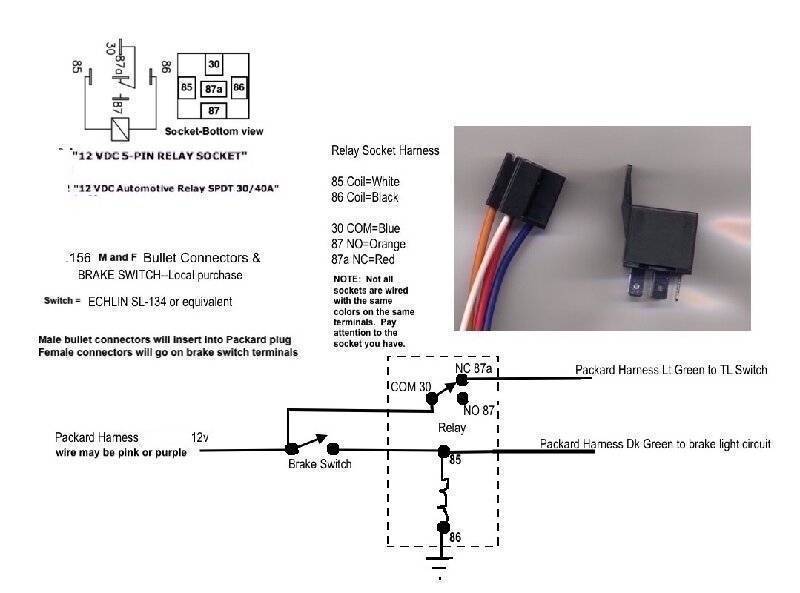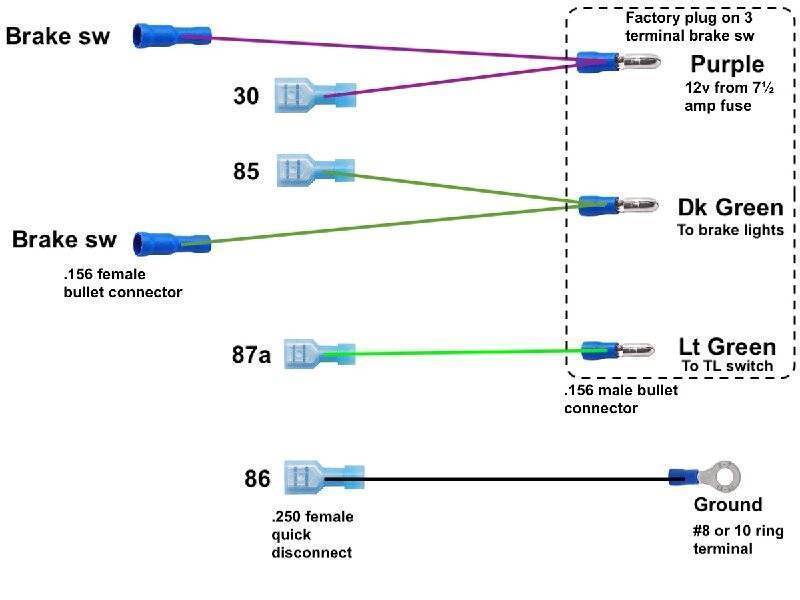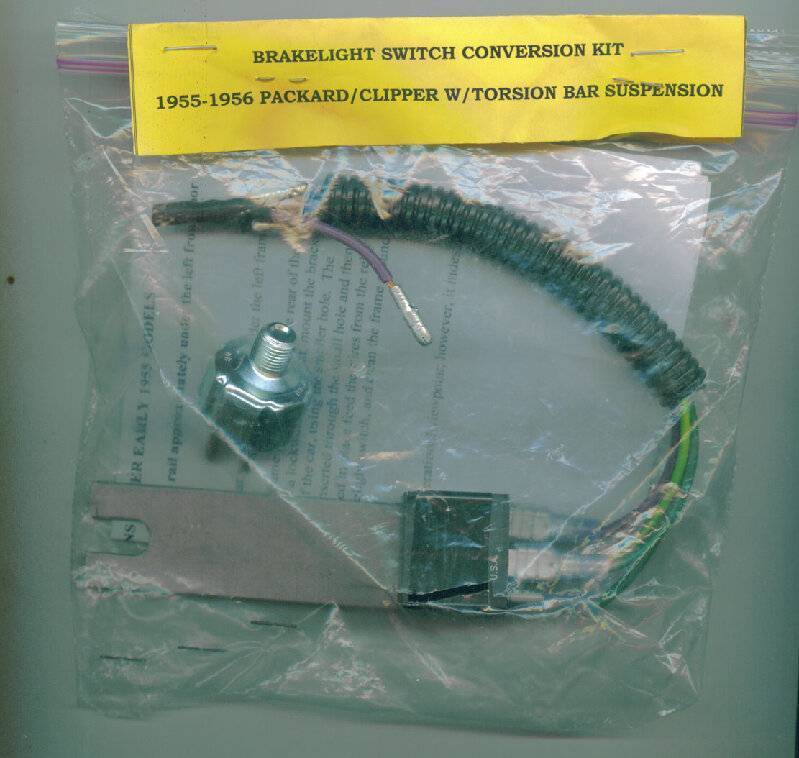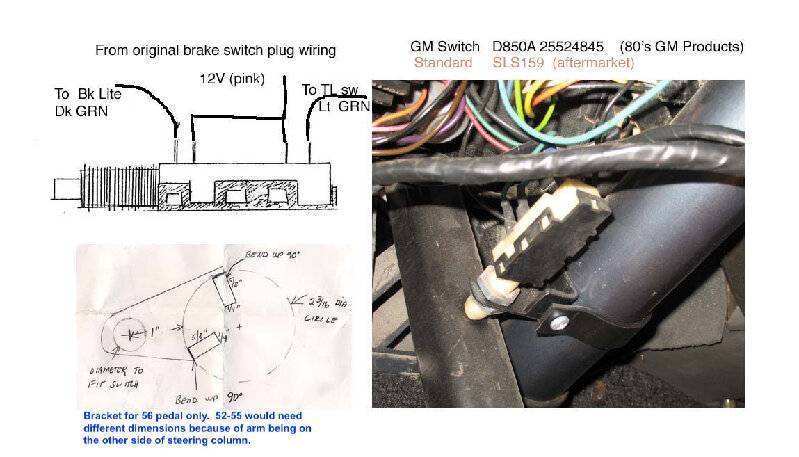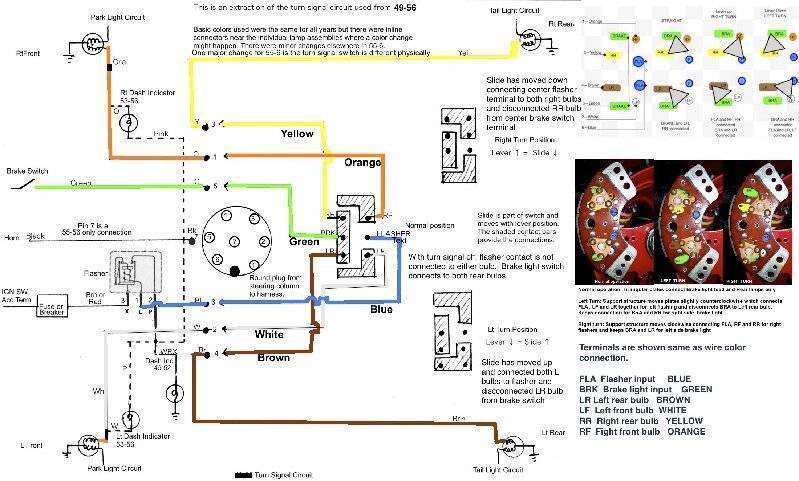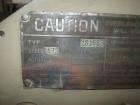|
Re: stop light switch
|
||||
|---|---|---|---|---|
|
Forum Ambassador
|
The VW switch has not been all that successful and several have had to replace it again in a fairly short time. Whether it is due to the switch or other factors is unknown. Here is an Amazon link if you want to try one. You will also need to change the terminals in the Packard loom.
The two prong switch needs a relay to duplicate the function of the 3 terminal switch but is a proven solution. It uses an inexpensive switch available almost anywhere. There is a conversion kit available at some of our vendors if you want something that is an easy install or for a bit less money and a bit of time you can buy a relay and switch and make your own. Here is the 2 terminal switch conversion schematic if you want to make it. The relay socket can be eliminated if you wanted to make a small loom using ordinary wire and terminals. Using the bullet connectors the extra loom will plug right into the Packard brake switch plug.
Posted on: 2021/4/14 19:24
|
|||
|
Howard
|
||||
|
||||
|
Re: stop light switch
|
||||
|---|---|---|---|---|
|
Forum Ambassador

|
If you're not into a DIY project, the simple and easy way is to just buy the inexpensive little P.N.R. kit. Five or 10 minutes to install and you're probably set for a lifetime and if not, a replacement 2-prong hydraulic switch like Echlin/NAPA SL-134 is less than $20.
Posted on: 2021/4/14 19:56
|
|||
|
||||
|
Re: stop light switch
|
||||
|---|---|---|---|---|
|
Home away from home

|
I have used hh56 system..
No problems..
Posted on: 2021/4/14 23:20
|
|||
|
Riki
|
||||
|
||||
|
Re: stop light switch
|
||||
|---|---|---|---|---|
|
Quite a regular

|
Sorry for the delay in responding, but other projects took priority. Just bought a 2 prong stop light switch & 5 pin relay & installed them according to the diagram provided. Everything working as it should. Thanks for the help.
Posted on: 2021/4/27 19:15
|
|||
|
||||
|
Re: stop light switch
|
||||
|---|---|---|---|---|
|
Home away from home
|
Lessons learned. After running all new lines, rebuild on the power brake booster and totally clean system. I discided to use synthetic DOT 5. Which within a few weeks of use wrecked the brake switch. Which in turn made the rear of the car lower to nothing.
Best Wishes; Dave O
Posted on: 2021/5/4 17:32
|
|||
|
||||
|
Re: stop light switch
|
||||
|---|---|---|---|---|
|
Forum Ambassador
|
Even some of the modern 2 terminal switches seem to have problems with silicone fluid.
Probably the only sure way to eliminate hydraulic switch problems with silicone fluid is to use a mechanical switch actuated by the pedal arm. A bracket made from heavy sheet metal -- 10 ga or so -- and mounted to the steering column with a hose clamp or the like makes the switch relatively easy to install on 56 power brake cars. A bit more work and different bracket dimensions is needed on the 52-55 power brakes because of the different pedal and placement. A 3 wire loom extension can be made to extend the wiring from the mechanical switch out to the original brake switch location and plug into the old brake switch plug on the factory loom. Manual brakes would need a switch that goes under the car and is actuated by the under floor linkage. All three have been done on Packards and as far as I know all have worked well with no problem installations.
Posted on: 2021/5/4 19:25
|
|||
|
Howard
|
||||
|
||||
|
Re: stop light switch
|
||||
|---|---|---|---|---|
|
Quite a regular

|
Just got my Caribbean back from body/paint shop. Before I brought it to the shop, I had installed a 2 prong brake light switch & 5 pin relay. Brake lights worked fine, as did t/l. I had cut wires to original 3 prong switch & connected the blue wire from relay connection #30 into the purple wire from 7.5 amp fuse, black wire from connection #85 into the dk. green wire from brake lights, and red wire from connection 87a into lt. green wire for t/l switch, white wire from connection 86 to clean ground. Didn't connect yellow wire from connection #87 to anything. I believe this is all done as per instructions from my previous post. As I drove car to body shop, my wife was following to bring me home, and she said brake lights worked fine, but signals were doing strange things [not sure exactly what, but weren't working as they should]. Inside the car, when I would put signal light on, indicator on dash would light but no flash. Car is now home- no signal lights and no indicator lights working. Fuse & flasher both seem to be ok. This may have nothing to do with installing new 2 prong switch & relay, but signal lights had always worked fine before. Any ideas?
Posted on: 2021/7/6 13:15
|
|||
|
||||
|
Re: stop light switch
|
||||
|---|---|---|---|---|
|
Forum Ambassador
|
The only tie in between the turn signals and brake switch/relay is the brake light signal does go thru the turn signal switch where it is split so one side can be on steady while the other side flashes. This was done in order that the rear bulbs can be shared. Before that change of running the brake light thru the switch was made (for Packard, the 23rd series) signals required a separate bulb in the rear.
First thing would be to check for a burned out bulb or a bad connection in a socket. If those are OK then check the grounds at the park and tail light housings. To operate properly, the old thermal flashers depend on the correct amount of resistance in the circuit being provided by the bulb filaments and having solid connections and ground paths. Symptoms vary but one sign of a burned out bulb or bad ground is the signals will work on one side but not the other or one outside bulb or the dash indicator will flash rapidly or else make one flash and then nothing. For whatever reason Packards do have a bit of bad reputation for developing poor grounds usually because of rust, corrosion or plain old dirt between body sheet metal and the studs or screws holding the housings or sometimes corrosion between the pot meta and socket crimps at the housings develops. On parking lights in particular some have had to add a dedicated ground between the socket shell and body sheet metal. You might also check the round 7 pin plug coming out of the loom toward the bottom edge of the dash and connecting to a short length of wires coming out of the steering column is also clean and tight. Here is a circuit extraction showing the brake light path thru the signal switch. Note the switch shown is a 23-54th series. 55-6 switches have the same basic electrical path but obviously a different looking switch.
Posted on: 2021/7/6 13:42
|
|||
|
Howard
|
||||
|
||||

 Brake Switch Relay Replacement.jpg (63.65 KB)
Brake Switch Relay Replacement.jpg (63.65 KB)